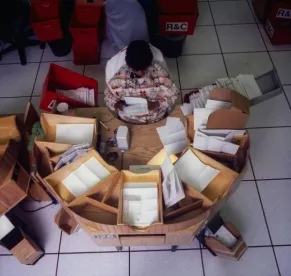Remember when the U.S. Postal Service (USPS) conjured up images of disgruntled employees engaging in workplace violence? Those days of incidents, often sparked by employee discontent over unresolved labor grievances and employment-related complaints, are apparently over. The USPS has learned from the violent incidents of the 1980s and is now considered a go-to source for federal agencies seeking timely and well-executed internal investigations.
I was surprised to learn from Federal News Radio that the USPS now handles roughly 60 percent of all federal Equal Employment Opportunity (EEO) complaints through inter-agency agreements. How has it gone from a back log of 4,000 EEO cases to a trusted source for handling internal complaints? Simply put, the USPS has applied tried and true best practices for conducting internal investigations.
Here are a few best practices every employer can learn (or re-learn) from the USPS:
-
Employment issues are human issues (often) with human solutions.
Offering employees clear and open lines of communication with HR is paramount to exploring the possibility of a pre-investigation resolution of internal disputes, which can be a major time- and money-saver. The USPS, for its part, offers an EEO complaint hotline for employees to call and receive a response within 24 hours (rain, sleet, or snow). The first order of business for the USPS is to try to resolve the matter quickly and informally with the employee who calls, recognizing that most employee complaints stem from misunderstandings or interpersonal issues. -
When it comes to the investigation, timeliness is key.
Allowing a grieved employee to stew in his or her discontent is bad for morale, productivity, and customer service. Employers are wise to start investigations promptly upon receiving complaints and to establish and communicate deadlines for completing investigations. The USPS used to take an average of 240 days to process an EEO complaint. This wait was more than its employees could bear, and came at a significant cost to the organization. Today, the USPS processes EEO claims in an average of 100 days. -
Who conducts the investigation matters.
Employers typically enlist human resources personnel, in-house counsel, outside counsel, or a third party investigator to conduct internal investigations into employment-related internal complaints. But the choice among these possible investigators is consequential, and employers should carefully consider:
-
Who is most familiar with the personalities involved and the corporate culture?
-
Who is most familiar with the employer’s policies and investigation protocols?
-
Who will seem most credible and objective to the individuals involved in the investigation?
-
Who has the most experience conducting internal investigations and knowledge of the relevant employment laws?
-
Who will exercise the most discretion and/or protect the confidentiality of the proceedings?
While internal investigators may offer cost-savings as well as institutional knowledge, external investigators often offer years of relevant expertise, unbiased objectivity, and (if outside counsel) may shield the investigation materials and findings from discovery. Agencies apparently see value in the USPS’s experienced staff of investigator “consultants” who offer a third party, objective approach to resolving EEO complaints.
For more best practices on conducting effective internal investigations, check out our article on the “Top Five Best Practices for Workplace Investigations.”



 />i
/>i

